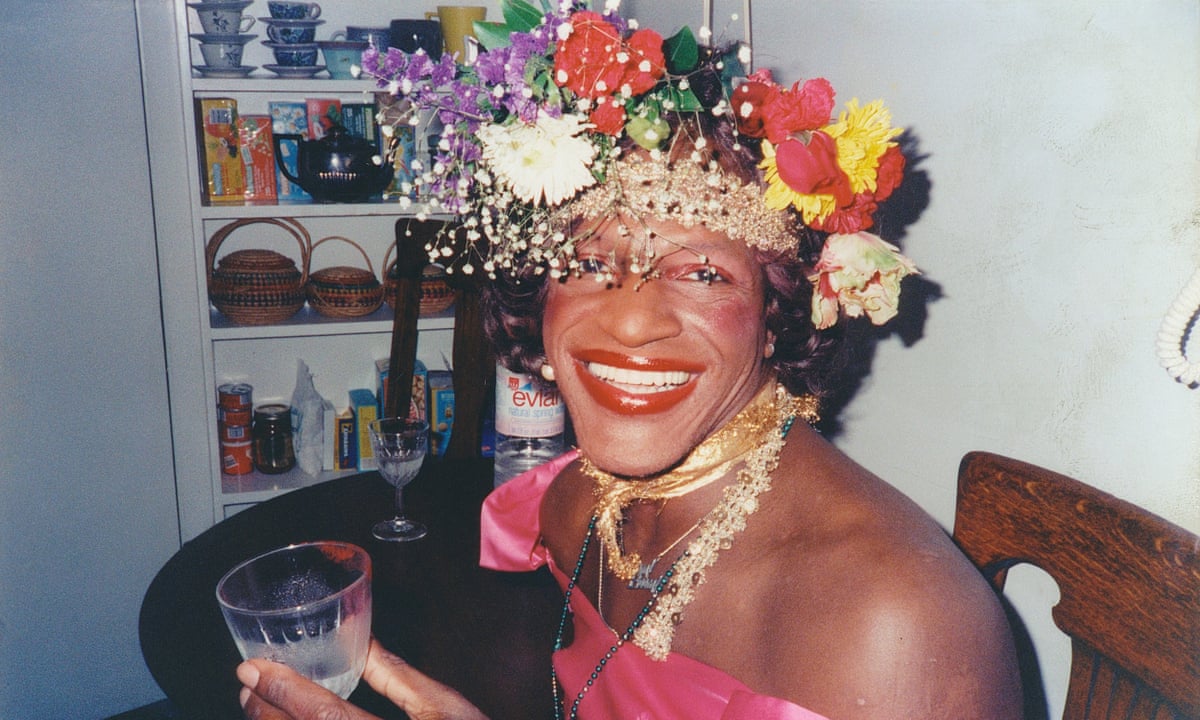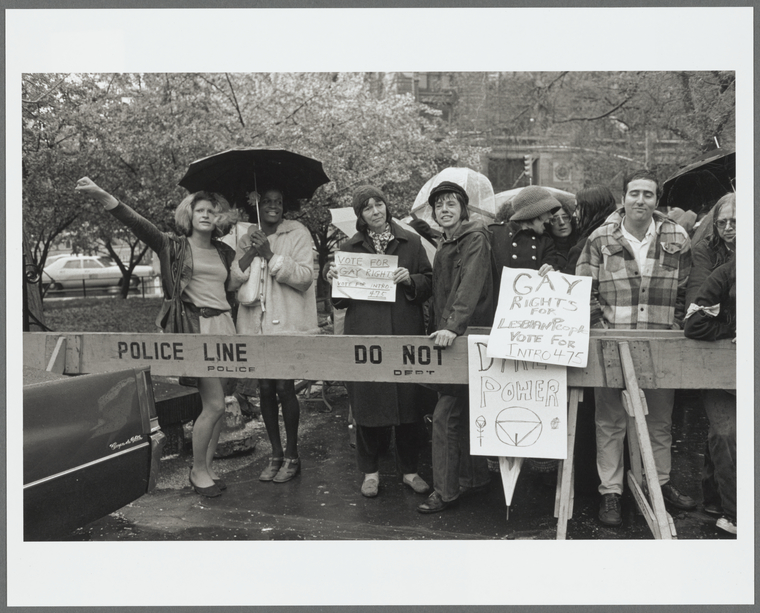
Courtesy of Netflix, The Death and Life of Marsha P Johnson, found on The Guardian accessed 4/18/25.
No pride for some of us without liberation for all of us

Courtesy of Netflix, The Death and Life of Marsha P Johnson, found on The Guardian accessed 4/18/25.
In 1963, after graduating from Thomas A. Edison Career and Technical Academy Annex, a 17-year-old Marsha P. Johnson arrived on the streets of New York City, with no more than $15 and a bag of clothes. Identified as male at birth and raised by another name, but enjoying feminine clothes and behavior, Marsha had gone to New York in search of somewhere she could embrace her true self. Not long after her arrival, Marsha would meet another runaway, 11 year old Sylvia Rivera. Sylvia had left home for similar reasons to Marsha. The two of them instantly became friends, with Marsha protecting and mentoring the young Sylvia. Their friendship would last a lifetime, and as New York began to change, as AIDS began to spread, and as the NYC queer population's resistance to repressive laws began to grow, both women became leading activists and fighters for the movement, and today are remembered as some of the most prominent figures of Stonewall and the queer liberation movement of the 70s.

Rudy Grillo, The Rudy Grillo Collection, Marsha P. Johnson and Sylvia Rivera, ca. 1989-1990. Found on NYhistory.org, accessed 4/18/25.
At 1:20 a.m. on Saturday, June 28, 1969, four plainclothes officers arrived at Stonewall Inn, a prominent drinking venue for queer residents. The officers attempted a mass arrest of all patrons, but were met with swift resistance, many fed up with the restrictive laws of the time, refusing to yet again be suppressed. Violence ensued as patrons battled with police, eventually turning to riot. This night would later come to be known as the Stonewall Riots. While all accounts of what happened that night vary, firsthand witnesses generally agree that Marsha P. Johnson was an avid player in the night. While her exact actions during the night are not entirely clear, it is clear she was on the front lines (2). The Stonewall Riots were a key moment in the gay rights movement, paving the way for the formation of the radical Gay Liberation Front, along with the more moderate spin off group, the Gay Activist Alliance. (2) In the early days, Marsha attended multiple rallies, sit-ins, and meetings of the newly formed Gay Liberation Front. However, she soon grew frustrated at the increasing domination of the group by white gay men and lesbians, feeling the movement did not appreciate the extent to which transgender youth needed help and support (1). Around this time, Sylvia came to Marsha with the idea for S.T.A.R., appointing herself president. S.T.A.R., an organization dedicated to helping homeless queer and trans youth in New York, providing them with care and shelter(1). Many young people called S.T.A.R. home. Sylvia and Marsha hustled every night to make sure their new family had breakfast each morning. S.T.A.R. began in an old truck before moving into a dilapidated building. While sadly shut down in 1971 after eviction, S.T.A.R. provided protection and care to many youth in its time. While some report S.T.A.R. as having operated longer, Marsha herself confirmed the group dispersed after the eviction, with many members leaving, including Sylvia, who had moved to Tarrytown(3).

Wikipedia contributers, S.T.A.R. Rally, CA 2022 (upload date). Found on Wikipedia.org
After Sylvia left, she and Marsha collaborated less frequently. However, the two remained prominent activists, with Marsha joining ACT up in the fight against AIDS, and committing herself to caring for the sick and dying. Her work caring for those dying of AIDS earned her the nickname "Saint Marsha" (1), and she would later be featured in Andy Warhol's picture series "Ladies and Gentlemen." Sylvia, meanwhile, fought against the exclusion of transgender people from sexual orientation non-discrimination legislation while performing at radio halls in Tarrytown. Sylvia would remain in Tarrytown for 19 years, but in 1992, upon hearing the devastating news that Marsha had died, immediately returned to NYC.

Manuscripts and Archives Division, The New York Public Library, Taken by Davies, Diana. (1973). Gay rights activists at City Hall rally for gay rights. Retrieved from NYPL Digital Collections accessed 4/18/25.
Marsha P. Johnson died as a result of a head injury and drowning. While her death was initially ruled a suicide, Sylvia and others insisted that Marsha had not been suicidal, and in 2012 the investigation into her death was reopened. Marsha left behind a legacy of advocacy for homeless LGBTQ+ youth, those affected by H.I.V. and AIDS, gay and transgender rights, and BIPOC rights, and lives on in the community she helped to build.

Wikipedia Contributers, Marsha P. Johnson Bust, taken 24 August 2021, found on Wikipedia , accessed 4/18/25